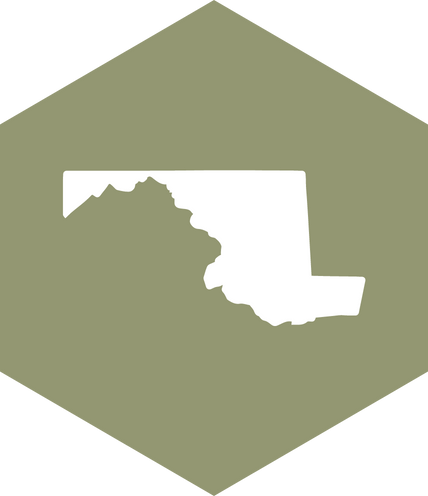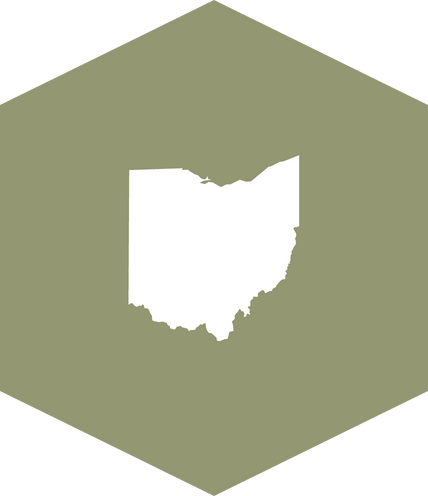What are Trichomes? Determine Your Cannabis Quality
Have you ever looked at your cannabis flowers and wondered what that frostiness was? Those are trichomes, and they are one of the most important parts of the medical cannabis experience. Trichomes can help medical marijuana users determine the quality of their cannabis, just by looking at it! But, what are trichomes, exactly?
In this article we’ll give the definitive guide to cannabis trichomes, and why they are important for the medical cannabis patient. We’ll tell you what they are, what their function is, and why understanding trichome color can indicate the quality of your medical cannabis.
Understanding Trichomes
When pulling apart your cannabis buds with your fingers, you may notice that your fingers get sticky. Those glandular hairs are called trichomes.
What are trichomes? Cannabis trichomes are small, mushroom-shaped glands, or bulbs, found on the plant surface, including the buds, leaves, and stems. They are the resin glands of the cannabis plant and often act as a defense mechanism for the entire plant throughout the cannabis cultivation process. Trichomes aren’t just something grown on cannabis, in fact, trichome production occurs across many plant species as a mechanism for pest and disease protection.

In female cannabis plants, cannabis trichomes are responsible for producing and storing the various compounds found in the plant, including cannabinoids (such as THC and CBD) and terpenes (which contain essential oils of the plant that give the plant its distinct aroma, flavor, and effects), which is why you’ll feel the sticky, resinous texture between your fingers. They’re also what are sought after when producers make cannabis extracts because they contain all the good stuff.
Different Types of Trichomes
Since trichomes are the resin glands of the cannabis plant, they are known as glandular trichomes. There are three different types of glandular trichomes.
Capitate Stalked trichomes are the ones you can see with your naked eye on your cannabis flower and contain the above-mentioned compounds.
Bulbous trichomes and Capitate Sessile trichomes are the other types of trichomes that are invisible to the eye but do also produce cannabinoids and contain important compounds.
These types of trichomes are less likely to be found on the cannabis buds, like capitate-stalked trichomes, and are more likely to be found on the leaves, stalks of the plant material, and other reproductive and vegetative organs on the plant.
Do Cannabis Trichomes Determine Potency?
Since only glandular trichomes contain cannabinoids and terpenes, the number that are present on a plant is one of the key factors that determine how potent a cannabis plant will be, also known as cannabis trichome densities.
One way of determining the abundance of trichomes is by looking at it with your blind eye; does it have high trichome density in that it’s frosty and plentiful in its capitate stalked trichomes? If not, some cannabis products could have experienced damage or been attracted to certain packaging like a magnet, causing trichome degradation.
Looking at the color of the trichomes in your cannabis strains is a good way to determine glandular trichome development through its level of maturity or trichome formation. Simply put, if cannabis has been harvested before its proper maturity level, its potency will be affected.
How to Determine Trichome Development
In addition to observing trichome densities (the more trichomes, the better!), here are some general rules of thumb from plant science to determine where your plant is at in terms of trichome production.
- When trichomes and the trichome head are clear, it means low trichome development and the plant is not yet mature. Potency will likely be lower due to lower levels of THC;
- When they are milky or white, it’s a good sign that the plant has reached maturity, with the cannabinoids within at their peak levels;
- If trichomes and the trichome head are amber in color, a plant is usually past its peak plant development, and trichome, and cannabinoid levels are starting to degrade
Let’s take a look at some examples:
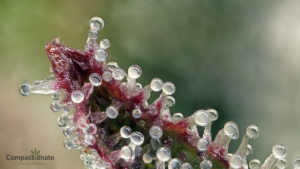
These cannabis trichomes are still very clear, which may mean that the plant is not mature, or was harvested before it had reached its optimal maturity level.
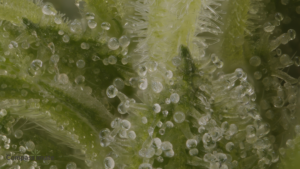
This plant above has more white and milky trichomes, indicating the peak maturity level of the compounds found inside (cannabinoids and terpenes).
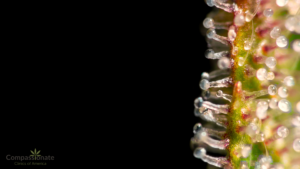
If you look closely you’ll be able to see that the ones above are starting to get signs of amber, which indicates that they are moving past their peak levels of maturity, and the compounds within may be beginning to degrade.
To keep your cannabis from degrading, invest in some cannabis storage such as airtight jars so to ensure your product keeps longer, as cannabis trichomes degrade when they are exposed to air.
How Can You Examine Trichomes on the Cannabis Plant?
Beyond your naked eye, there are a few ways that medical marijuana patients can get technical about plant sci and examining the quality of their trichomes, and even see more types of trichomes like the bulbous trichomes or the capitate sessile trichomes which aren’t visible to the eye. One way to look at them is through a jeweler’s loupe.
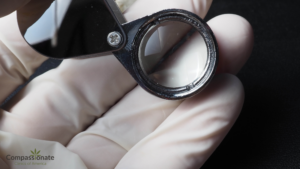
A jeweler’s loupe is a relatively inexpensive way to look through the looking glass to see the quality and color of your cannabis trichomes. They can be bought online or at many hobby stores. One of the downsides is that it only has 10x magnification so you have to have a steady hand.
Another way to examine trichome quality is through a handheld microscope, which will have anywhere from a 60-120x magnification range to get up close and personal with your trichomes.
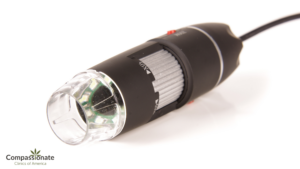
These will require you to have quite a steady hand to maintain a good view of your trichomes, which many people find to be a downside of these handy tools.
Finally, if you want to get scientific, you may choose to use a microscope that comes in 40x, 100x, 400x, and sometimes 1000x magnification (if you want to get HIGHLY technical).

Microscopes allow you to steady the bud to look at the trichomes, while also getting incredible magnification.
Explore Cannabis Quality with Your Medical Cannabis Certification
When you purchase medical marijuana from a licensed medical dispensary with your medical marijuana card, you must be served quality products, especially when using cannabis for your health. Trichomes serve as a way to ensure you’re always consuming quality flower by always doing a visual inspection of those frosty trichomes found on your cannabis flowers.
Remember, when examining your cannabis plant, a clear color of cannabis trichomes indicates the cannabis plant is not quite ready, a white or milky color indicates it’s just right, while an amber color may indicate that the cannabinoids and terpenes within a cannabis plant may be starting to degrade. Trichome density is also a strong indicator of quality of cannabis plants.
Do a visual inspection of your cannabis flower with your eyes, a jeweler’s loupe, a handheld or pocket microscope, or a tabletop microscope to check trichome quality. Looking at your cannabis plants before you consume it also helps you notice any undesirables like tiny insects (yes, it can happen), hair, or other contaminants brought on through environmental factors.
If you find something undesirable from a brand, be sure you provide the brand feedback when you can so that they’re able to improve upon the medical cannabis products they’re putting on the market.
Go Forth and Be Cannabis Critics
Not all cannabis is created equal, which is why understanding the answer to the question “What are Trichomes?” is so important.
We hope that by understanding the importance of trichomes and the different types of trichomes (capitate stalked, capitate sessile, and bulbous) in the medical cannabis experience, you can learn to recognize the quality of your products through a visual inspection of your cannabis flowers.










